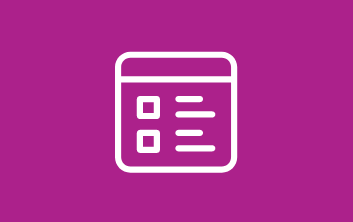Reading & language arts


Equating WCPM scores across passages of MAP Reading Fluency
NWEA equated words-correct-per-minute (WCPM) scores from oral reading passages included in the NWEA MAP Reading Fluency assessment.
By: Jing Chen, Mary Ann Simpson
Products: MAP Reading Fluency


The impact of English Learner reclassification on high school reading and academic progress
This study estimates the causal impact of 8th grade English learner (EL) reclassification on high school English language arts (ELA) standardized test scores, SAT (Scholastic Aptitude Test) reading, and on-track to graduate status.
By: Angela Johnson
Topics: High-growth schools & practices, English Language Learners, Reading & language arts


5 Guiding Principles for Improving Reading Fluency Assessment
This Michigan Association of Superintendents and Principles blog post examines 5 Guiding Principles for Improving Reading Fluency Assessment
Topics: Test design, Academic content, Reading & language arts


How Teachers and Families Can Help Students Build Reading Fluency Over the Summer
In this Education Post article, Cindy Jiban discusses research showing that kids in the primary grades typically return from summer break with slower and less accurate oral reading. But this doesn’t have to be the case: we can set kids up for growth in fluency instead.
Topics: Seasonal learning patterns & summer loss, Academic content, Reading & language arts


This study investigates the impact of a teacher professional development (PD) program in rural Rwanda, part of a randomized controlled trial of Save the Children’s early literacy intervention, “Literacy Boost.”
By: Angela Johnson, Catherine Galloway, Elliot Friedlander, Claude Goldenberg
Topics: Empowering educators, Early learning, Reading & language arts


How the Primary Grades Can Save Us: Growing American Reading Comprehension
When recent NAEP results came out, the bleak headline was that American students are not getting better at reading comprehension. When the NAEP folks convened a panel of reading experts in early April, the primary grades got called out as one potential culprit. So what needs re-evaluating in K-3 literacy? One reasonable place to look is at oral reading fluency and the foundational skills that feed word decoding.
Topics: Early learning, Academic content, Reading & language arts


A Tech Refresh for Reading Fluency
In this Ed Tech Digest article, Cindy Jiban discusses how oral reading fluency assessment is now commonplace in the primary grades. This represents a significant step for data-based problem solving in education. However, given some of the side effects that have emerged, it is clear that fluency assessment is due for significant structural improvement.
Topics: Measurement & scaling, Academic content, Reading & language arts


